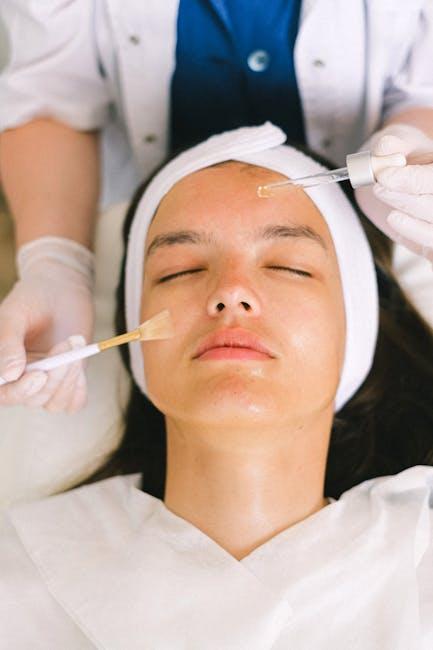
New Cosmetic Procedure Guidelines Published – Australian Health Practitioner Regulation Agency
The landscape of cosmetic procedures in Australia is evolving rapidly, driven by an increased demand for safe and ethical aesthetic practices. In response to this growing trend, the Australian Health Practitioner Regulation Agency (AHPRA) has recently published updated guidelines to govern cosmetic procedures nationwide. These new regulations aim to safeguard both practitioners and patients, ensuring transparent, safe, and professional cosmetic treatments are delivered throughout Australia.
Understanding the New Cosmetic Procedure Guidelines
With cosmetic procedures becoming increasingly popular, AHPRA’s updated guidelines clarify the responsibilities and requirements for practitioners performing these treatments. The guidelines establish clear standards focusing on patient safety, informed consent, and the scope of practice for health professionals involved in cosmetic interventions.
Key Highlights of the Guidelines
- Scope of Practice: Defines which health practitioners can perform specific cosmetic procedures based on their training and registration status.
- Informed Consent: Reinforces the need for comprehensive patient communication, ensuring clients understand all risks, benefits, and alternatives.
- Qualifications and Training: Sets minimum education and competency requirements to maintain high standards of care.
- Advertising and Promotion: Regulates how cosmetic procedures are marketed to prevent misleading claims or unethical practices.
- Complaint Handling: Details streamlined processes for patients and practitioners to report concerns or adverse events.
Why These Guidelines Matter for Practitioners and Patients
The updated guidelines offer a critical framework for both practitioners and patients, fostering trust and professionalism in cosmetic treatments.
- Patient Safety: Reduces the risk of complications through clear safety protocols and practitioner qualifications.
- Professional Accountability: Ensures practitioners operate within defined legal and ethical boundaries.
- Consumer Confidence: Enhances transparency, building patient trust in the cosmetic healthcare industry.
- Consistency Across Australia: Harmonises standards across states and territories to protect consumers irrespective of location.
Who Is Impacted by AHPRA’s Cosmetic Procedure Guidelines?
The guidelines affect a broad range of health practitioners involved in aesthetic medicine, including:
- Dermatologists
- Plastic surgeons
- Registered nurses (RNs) and nurse practitioners (NPs) performing cosmetic injections
- General practitioners (GPs) offering cosmetic treatments
- Aestheticians and other allied health workers
Summary Table: Practitioner Requirements Under the New Guidelines
| Practitioner Type | Permitted Procedures | Training Requirement | Registration Status |
|---|---|---|---|
| Plastic Surgeons | All surgical & non-surgical cosmetic | Specialist surgical training | Medical Board |
| Dermatologists | Non-surgical injections, laser treatments | Specialist dermatology training | Medical Board |
| Registered Nurses & Nurse Practitioners | Cosmetic injections (e.g., Botox, fillers) | Specific accredited cosmetic courses | Nursing and Midwifery Board |
| General Practitioners | Non-surgical cosmetic procedures | Additional accredited training | Medical Board |
Practical Tips for Cosmetic Practitioners Under the New Guidelines
To comply with the updated rules and continue delivering safe, effective cosmetic treatments, practitioners should consider the following best practices:
- Stay Informed: Regularly review AHPRA publications and attend relevant training updates.
- Document Thoroughly: Keep meticulous records of patient consultations, informed consent, and treatment plans.
- Verify Credentials: Ensure all cosmetic staff meet the stipulated qualifications and registration requirements.
- Implement Safety Protocols: Maintain sterile environments and emergency procedures as per standards.
- Promote Transparency: Provide patients clear information on risks, outcomes, and alternative treatments.
Case Study: Successful Implementation of New Guidelines
Glow Aesthetics Clinic in Sydney recently transitioned their cosmetic practice to fully align with AHPRA’s new guidelines. By updating staff training, upgrading patient consent protocols, and revising marketing materials to comply with ethical standards, the clinic reported:
- 40% reduction in patient complaints within six months
- Improved patient retention and satisfaction scores
- Enhanced staff confidence in delivering treatments safely
This example highlights how embracing the guidelines benefits both practitioners and clients alike.
What Patients Should Know About the New Guidelines
Patients seeking cosmetic procedures under these new guidelines can expect:
- Clear Communication: Comprehensive explanations about treatment options and expected results.
- Verified Practitioners: Assurance that their provider is appropriately qualified and regulated.
- Safety Assurance: Adherence to hygiene, safety, and emergency protocols.
- Right to Raise Concerns: Access to complaint and feedback mechanisms through AHPRA.
Conclusion: A New Era of Safety and Transparency in Cosmetic Procedures
The release of new cosmetic procedure guidelines by the Australian Health Practitioner Regulation Agency marks a pivotal step in enhancing patient safety and professional accountability in Australia’s booming aesthetic industry. Whether you are a practitioner or considering cosmetic treatment, understanding and embracing these guidelines ensures that cosmetic procedures are performed ethically, safely, and with the highest standards of care.
By following AHPRA’s updated recommendations, Australia continues to foster a trusted environment for cosmetic healthcare, where patient wellbeing remains the highest priority.


